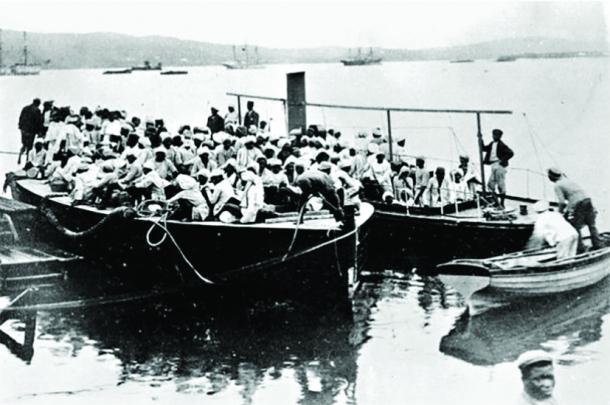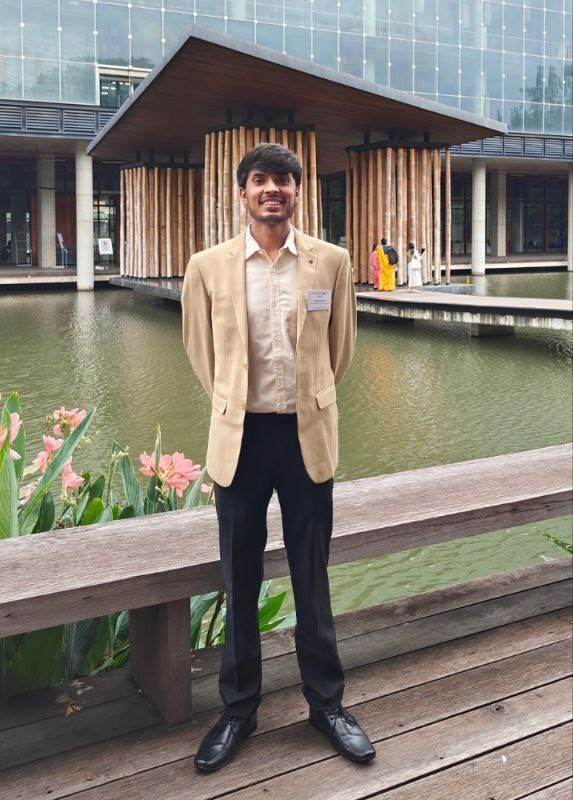Introduction: Understanding the Girmitiya System
The term “Girmitiya” usually derives from the word Girmit, which was actually an “agreement,” reflecting the contractual nature of Indian indentured labour migration that fundamentally reshaped global demographics between 1834 and 1920[1]. The indentured labour system emerged as a response to the abolition of slavery in British colonies.[2] While superficially the Girmit agreement was based on voluntary contracts, it has been described by scholars as a “new system of slavery[3],” wherein Indian labourers—predominantly from the impoverished regions of Bihar, Uttar Pradesh, and later Tamil Nadu—were recruited under five-year contracts (the “girmit”) to work on sugar, tea, and rubber plantations in distant colonies[4][5].
The architecture of indentureship was deceptively simple: recruiters (arkatis) would promise labourers passage, wages, and eventual return to India.[6] However, the reality involved brutal working conditions, inadequate remuneration, and systematic exploitation that often rendered these agreements closer to bondage than free labour. Between 1834 and 1920, approximately 1.5 million Indians embarked on this perilous journey, fundamentally altering the demographic, cultural, and economic landscapes of their destination countries.
The Chronology and Geography of Girmitiya Migration
The Pioneering Phase: Mauritius as the First Destination
Mauritius holds the distinction of being the first major destination for Indian indentured labour, commencing in 1834, immediately following the abolition of slavery in British colonies. The data reveal that Mauritius received the most significant absolute number of Indian migrants during the indenture period—453,063 individuals between 1834 and 1900. This massive influx established Mauritius as the colony most transformed by Indian migration, with Indians constituting a demographic majority that persists to the present day.
By 1879, the Indian population in Mauritius had reached 141,309, demonstrating remarkable demographic consolidation within four decades of migration. The population grew to 261,000 by 1900, expanded to 520,000 by 1969, and stands at 894,848 in 2025. This trajectory illustrates not merely natural population growth but the deep-rootedness of the Indian community in Mauritian society, where descendants of girmitiyas now constitute approximately two-thirds of the national population.
The Caribbean Theatre: Guyana and Trinidad as Major Recipients
Guyana (British Guiana) and Trinidad and Tobago emerged as the two largest recipients of Indian indentured labour in the Caribbean, fundamentally reshaping the ethnic composition of these territories.
Guyana received 238,909 indentured labourers between 1838 and 1916, making it the second-largest recipient overall after Mauritius. The population trajectory demonstrates extraordinary growth: from 83,786 in 1900 to 118,000 in 1969, 257,000 in 1969, and 321,500 in 2025. This growth pattern reflects both natural increase and the community’s successful economic and social integration, with Indo-Guyanese constituting approximately 40% of the contemporary Guyanese population.
Trinidad and Tobago received 143,939 indentured migrants between 1845 and 1916. The population grew from 25,852 in 1900 to 83,000 in 1969, 360,000 by 1969, and 549,545 in 2025. This remarkable expansion—from approximately 144,000 arrivals to over half a million descendants—underscores the community’s demographic vitality and their evolution into a major political and cultural force in Trinidad, comprising roughly 35-40% of the national population.
Fiji: The Pacific Outpost of Girmitiya Settlement
Fiji represents a unique case in the Girmitiya diaspora, being the only significant Pacific destination for Indian indentured labour. Between 1879 and 1916, Fiji received 60,965 indentured workers, primarily to work on sugar plantations established by the Colonial Sugar Refining Company. The relatively late commencement of migration to Fiji (1879) compared to Caribbean and Mauritian destinations reflects the delayed development of plantation agriculture in the Pacific.
The demographic trajectory is striking: from a mere 480 individuals in 1879 (likely representing an early or incomplete count) to 12,397 by 1900, then expanding dramatically to 241,000 by 1969 and 316,081 in 2025. The Indo-Fijian community, despite constituting approximately 37% of Fiji’s current population (down from a majority in the late twentieth century due to emigration following political upheavals), remains central to Fijian economic and cultural life.
South Africa: The Natal Experience
South Africa, specifically the Colony of Natal, received 152,184 Indian indentured labourers between 1860 and 1911, primarily for sugar plantations and coal mines. The population figures reveal an extraordinary transformation: from 12,668 in 1900 to 64,953 in 1969, then exploding to 614,000 by 1969 and an impressive 1,700,000 in 2025.
This dramatic population increase reflects not only the descendants of indentured labourers but also the subsequent arrival of “passenger Indians”—traders and professionals who migrated independently, including figures like Mahatma Gandhi, who arrived in South Africa in 1893. The South African Indian community’s growth trajectory is the most dramatic in the girmitiya diaspora, increasing from approximately 152,000 original migrants to 1.7 million, making it the second-largest Indian diaspora population after Mauritius in absolute terms among former indenture destinations.
Suriname: The Dutch Colonial Experience
Suriname, under Dutch colonial administration, received 34,304 Indian indentured labourers between 1873 and 1916. The population grew from 3,215 in 1900 to reaching 101,715 by 1969 and 160,160 in 2025. Indo-Surinamese constitute approximately 27% of Suriname’s current population, maintaining vibrant cultural traditions including language (Sarnami Hindi), religious practices, and cuisine.
The Lesser Caribbean Islands: Smaller but Significant Communities
Several smaller Caribbean islands received Indian indentured labour, creating communities that, while numerically smaller, remain culturally significant:
Jamaica received 36,412 indentured migrants between 1845 and 1915. However, the community’s demographic trajectory differs markedly from other destinations: from 15,134 in 1900 to 14,134 in 1969 (suggesting population decline or emigration), rebounding to 27,951 by 1969, and reaching 73,000 in 2025. The relatively modest growth and mid-century decline likely reflects significant assimilation into the broader Jamaican society and emigration.
Grenada received 3,200 indentured workers between 1856 and 1885. The population grew from 1,200 in 1900 to 2,118 in 1969, 9,500 by 1969, and 4,700 in 2025. The apparent decline from the 1969 peak to 2025 may reflect emigration or methodological differences in population counting.
Saint Lucia received 4,350 migrants between 1858 and 1895, with population growing from 1,175 in 1900 to 2,000 in 1969 and 19,150 in 2025, indicating recent demographic revival or improved census methodology.
Saint Vincent and the Grenadines received 2,472 migrants between 1860 and 1880, with population fluctuating from 1,557 in 1900 to merely 100 in 1969 (suggesting severe emigration or assimilation), then recovering to 3,703 by 1969 and 6,650 in 2025.
Saint Kitts and Nevis received only 337 migrants between 1860 and 1861, representing one of the smallest and shortest indenture experiments. The population grew modestly to 200 in 1900 and 600 in 2025.
Réunion and Seychelles: The French Colonial Experience
Réunion, a French territory, received 26,507 indentured migrants between 1861 and 1883. The population expanded remarkably to 45,000 and then to 300,159 in 2025, though the data lacks intermediate benchmarks. This substantial growth reflects both natural increase and the French colonial administration’s policies toward Indian settlement.
Seychelles received 6,315 migrants, with migration continuing until 1916, though precise starting dates remain uncertain in available records. The population grew to 13,238 in 2025.
Demographic Patterns and Analysis
Overall Migration Volume and Distribution
Across all destinations, the indenture system transported over 1.2 million Indians (based on the documented figures in this dataset). The distribution was highly concentrated:
- Mauritius: 453,063 (37.8% of total)
- Guyana: 238,909 (19.9%)
- South Africa: 152,184 (12.7%)
- Trinidad and Tobago: 143,939 (12.0%)
- Fiji: 60,965 (5.1%)
These five destinations accounted for approximately 87.5% of all Indian indentured migration, with the remaining dozen countries receiving the balance.
Population Growth Trajectories (1900-2025)
Examining population multiplication factors from the end of indenture (approximately 1900) to 2025 reveals fascinating patterns:
- South Africa: 134-fold increase (12,668 to 1,700,000)
- Fiji: 25.5-fold increase (12,397 to 316,081)
- Trinidad: 21.3-fold increase (25,852 to 549,545)
- Réunion: 6.7-fold increase (45,000 to 300,159)
- Mauritius: 6.3-fold increase (141,309 to 894,848)
- Guyana: 3.8-fold increase (83,786 to 321,500)
The dramatic variation in growth rates reflects differing socio-economic conditions, political stability, emigration patterns, and integration policies across these nations. South Africa’s extraordinary growth includes both descendants of indentured labourers and subsequent “passenger Indian” migration, while the Caribbean islands show more modest but steady growth patterns.
The Decline and Cessation of Indenture
The indenture system faced mounting criticism from Indian nationalist leaders, humanitarian organisations, and the Government of India itself. Concerns about exploitation, mortality rates during voyages and on plantations, and the system’s incompatibility with emerging principles of human dignity led to its gradual cessation. Trinidad and Guyana continued receiving indentured labour until 1916-1917, while Fiji’s indenture ended in 1916, marking the conclusion of this chapter in Indian migration history.
Legacy and Contemporary Significance
The Girmitiya diaspora represents one of the most significant forced migration systems in modern history, creating permanent Indian communities across three continents and multiple oceans. The demographic data from 1834 to 2025 chronicles not merely population numbers but the resilience, adaptation, and flourishing of communities that emerged from conditions of severe exploitation.
Contemporary descendants of girmitiyas—numbering over 4.5 million across these countries—have made profound contributions to their adopted homelands while maintaining distinctive cultural identities. From Mauritius’s political leadership to Trinidad’s intellectual and artistic contributions, from Fiji’s economic dynamism to Guyana’s plural society, the girmitiya legacy continues to shape national identities and regional dynamics.
The population trajectories documented here—from the arrival of indentured labourers to the establishment of multigenerational communities—testify to the extraordinary human capacity to transform exploitation into belonging, to convert bondage into citizenship, and to create enduring cultural synthesis from traumatic origins. The story of the Girmitiyas remains essential to understanding both the brutal realities of colonial labour systems and the remarkable resilience of Indian diaspora communities worldwide.
Conclusion
The quantitative evidence presented in this analysis, spanning nearly two centuries, demonstrates that the girmitiya system, while rooted in exploitation, ultimately created permanent, thriving diaspora communities. From the 453,063 who arrived in Mauritius to the 337 who reached Saint Kitts and Nevis, each individual represented a thread in the complex tapestry of global Indian migration. Their descendants, now numbering in the millions, embody the enduring legacy of one of history’s most significant labour migrations. This legacy continues to evolve and shape the Indian diaspora’s global presence in the twenty-first century.
References
- Brij V. Lal (1983), Girmitiyas: The Origins of the Fiji Indians.
- G.W. Roberts and J. Byrne, “Summary Statistics on Indenture and Associated Migration Affecting the West Indies, 1834–1948,” Population Studies, Vol. 20, No. 1 (1966), pp. 125–134.
- Hugh Tinker, “Indians Abroad: Emigration, Restriction and Rejection,” in Expulsion of a Minority: Essays on Ugandan Asians, ed. Michael Twaddle (London, 1975).
- Ministry of External Affairs (MEA), Population of Overseas Indians, 2025.
- Girmit – The Indenture Experience in Fiji – New Girmit.org
- The Agreement and the Girmitiya – Harvard Law Review
Data Sources: Primary migration data derived from Brij V. Lal, Girmitiyas: The Origins of the Fiji Indians (Canberra: Journal of Pacific History, 1983), which synthesizes G.W. Roberts and J. Byrne, ‘Summary statistics on indenture and associated migration affecting the West Indies, 1834-1948’, Population Studies, XX: 1 (July 1966); J. Geoghegan, Coolie Emigration from India (Calcutta 1874); Parliamentary Papers; and Hugh Tinker, ‘Indians abroad: emigration, restriction and rejection’ (London 1975). Contemporary population figures (2025) from Ministry of External Affairs, Government of India.
[1] The term “Girmitiya” originates from the word agreement, or girmit—a colloquial adaptation by Indian labourers to refer to the indenture contract they signed before being transported overseas.
[2] . The end of slavery created an acute labour shortage in plantation economies across the Caribbean, Indian Ocean, and Pacific regions.
[3] The experience of these workers was captured poignantly by scholars such as Hugh Tinker, who termed the indenture system “a new system of slavery,” and later, by Brij V. Lal, who reconstructed the lived experiences and community formations of these early migrants.
[4] Walton Look Lai, Indentured Labor, Caribbean Sugar 317–18 (1993).
[5] There was a provision of renewal of the agreement if desired.
[6] Several push and pull factors fueled this migration. In India, rural poverty, recurrent famines, and the destruction of traditional livelihood acted as powerful push factors. The “pull” was the promise, often exaggerated by recruiters (arkatis), of steady wages and a better life in distant lands—the tapu (islands).



Leave a Reply